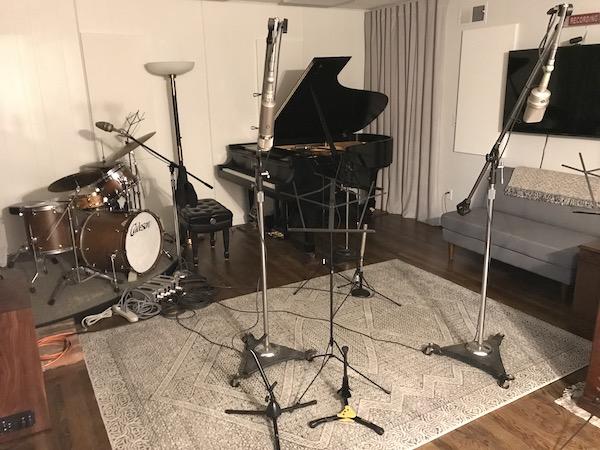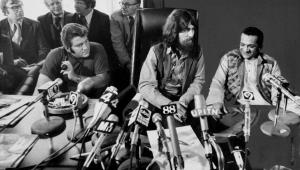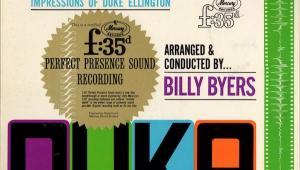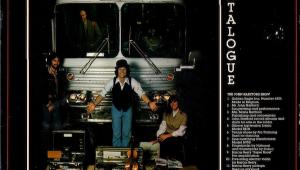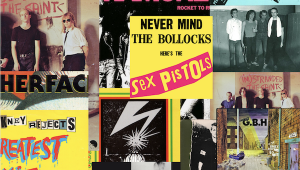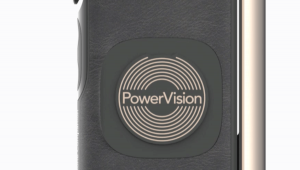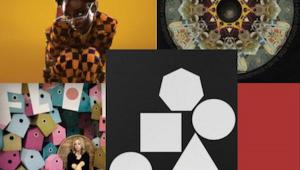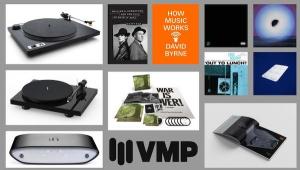Here's hoping it's successful from a sonic and financial standpoint. some rooms' dimensions, configuration and construction appear to preclude good sonics but end up sounding great anyway. And we're all aware of places designed by experts which aren't all that, much less a bag of chips.
In “The Valley”, Mastering Engineer Kevin Gray Opens Cohearent Recording A/K/A “Hackensack West"
It’s a colorful story but the facts suggest otherwise. The family home’s high ceilinged living room was purpose-built in 1946 so that Rudy, still earning his living as an optometrist, could record at home in an acoustically friendly space.
25 Prospect Avenue, corner of Thompson Street was the Van Gelder’s Hackensack address. It was a relatively small home built of cinderblock later covered in gray stucco and eventually dwarfed by towering apartment buildings. For years it sat unoccupied and unnoticed in the shadow of the ever expanding Hackensack Medical Center.
I’ve advised young writers to not make reviews and stories too personal, but before getting into Kevin Gray’s “Hackensack West” studio details, I need to interject here because incredibly and totally coincidentally in 1986 when I left California I moved to an apartment in “The Beachwood” at 100 Prospect Avenue, Hackensack, N.J. just down the block and across the street from the Van Gelder home.
At the time, while I of course knew that RVG recorded many classic albums in his parents’ Hackensack, NJ living room, I didn’t know the address.
One day shortly after moving in, I took a walk down Prospect towards Essex Street, more precisely to Simple Simon’s Market and Liquor store. While passing 25 Prospect I noticed “Van Gelder” spelled out in “soot script” above the door where had once been a wrought iron sign.
“Could this be?”, I remember asking myself. Once I’d cleared the front and could see the side of the house, I had the answer: there were double industrial style doors and an equipment ramp! I’d moved in down the block from Blue Note “ground zero”!
“I gotta get out my camera and take some pictures one of these days,” I said to myself. Of course, had those days been cell phone days I’d now have those photos.
Not that long afterwards when I finally did go back, to my surprise, anguish and shock, the house—seemingly overnight—had been totally demolished to make way for a new soon to be built “professional building”.
Gone were the double doors and ramp that should have been preserved by the Smithsonian, never mind somehow the living room itself—at least the windows and Venetian blinds made famous in so many Francis Wolff photos should have been saved. Nothing was.
A few years ago, when I finally visited Rudy Van Gelder’s Englewood Cliffs studio (where, by the way, he had also lived) I asked musician/arranger Don Sickler who along with his wife Maureen now run the place, how all of that history ended up in the dumpster.
Sickler told me the estate—or at least the family home at 25 Prospect—reverted to Rudy’s half-brother with whom he didn’t get along and he made a quick sale without regard to history or Rudy’s legacy.
Kevin Gray’s “Hackensack West”
There’s probably not an AnalogPlanet reader unfamiliar with Kevin Gray’s mastering work. Gray has had a long career cutting lacquers, first at legendary Artisan Sound and after a few other stops landing at Future Disc where I first encountered him in the mid ‘90s when I did some QC listening and wrote liner notes for MCA’s “Heavy Vinyl” series.
Gray later began cutting at AcousTech Mastering located at Record Technology Incorporated (RTI), which meant he could cut a lacquer and have it walked across the street to be immediately plated. Record plating couldn’t get any “fresher”. He later rebuilt the room to his specs before moving his operation in 2010 to a new San Fernando Valley facility built in what formerly was his garage and opened Cohearent Audio, LLC. Many upgrades followed, resulting in Blue Note reissues cut at 33 1/3 for Music Matters and Blue Note itself that sound considerably better than the already fine sounding ones cut at 45rpm for Analogue Productions.
“The decade between 1954 to 1964 is considered the ‘Golden Age’ of recorded sound”, Gray recalled in a note, “clearly this was entirely within the vacuum tube era. I had a novel idea: in order to get that vintage sound we all love, (I’d) design and build an all-valve (vacuum tube) recording system from microphones through to the disc cutting head, NO transistors or IC’s anywhere in the signal path. That took much longer than anticipated but is finally complete.”
Where to record? The studio, Gray wrote, would need to comfortably accommodate perhaps 3 to 7 musicians. Gray says, after visiting Rich Capeless’ “excellent Rudy Van Gelder site” he realized that his own living room “…is very similar in size and shape to Rudy’s Hackensack N.J. living room studio.” Gray wrote that Rudy’s Hackensack recordings for both Blue Note and Prestige are “…some of my favorite jazz records, and they are also exceptionally good sonically.”
Gray had not considered using his own living room as the recording space, until he saw the Hackensack layout on the website and then he “plunged ahead” and turned his living room into a studio. “It’s laid out in a similar, but not identical way to Hackensack”, he wrote.
The studio features a 7’ Steinway B piano and a Hammond C3 organ with a Leslie speaker cabinet, one of which was also used in RVG’s living room.
Gray wants to make clear that his intent was not to duplicate what Rudy did, though he’s using some of the same microphones. The custom vacuum tube electronics are of course different and he’s using a tube-based Studer C37 rather than an Ampex.
Gray wrote, “One of the things I really appreciate about much of the late ‘50s and early ‘60s jazz recordings is the minimal miking and panning of instruments to create a stereo “picture”. The modern method involves using many mics on drums, and 2 or more mics on piano, to create “stereo” images of these instruments. The result is 10-foot-wide drum kits and 10-foot-wide pianos superimposed on one another. That isn’t how live music sounds! In a club, for instance, you hear the piano in one location and the drums in another.
“It wasn’t just Rudy who recorded this way. Frank Laico (Dave Brubeck -Time Out) and Fred Plaut (Miles Davis -Kind of Blue) did the same at Columbia, as did Roy DuNann (“The Lighthouse All Stars”) at Contemporary, and many others. Needless to say Cohearent will be mostly utilizing the earlier method!
“It’s the ‘essence of an era’ we are trying to recapture with today’s musicians, not the sound of specific spaces, engineers or recordings.”
“One last thing”, Gray told me, “Since the studio adjoins Cohearent’s mastering room, Direct to Disc recording is possible. Stay tuned!”
Speaking of “stay tuned”, writing about this is one thing. How about listening to excerpts from projected early summer AAA vinyl release (RTI is slammed with orders of course) Kirsten Edkins featuring Edkins on sax, Gerald Clayton (courtesy Blue Note) on piano, Ahmet Turkmenoglu on bass, Lemar Guillary on trombone and Chris Wabich on drums?
The recording was produced all-analog/all-tube at Kevin Gray’s Cohearent Recording (a/k/a “Hackensack West”) December 10th and 11th, 2021. Dave Connor produced, Kevin Gray , Ryan Wirthlin co-engineered.
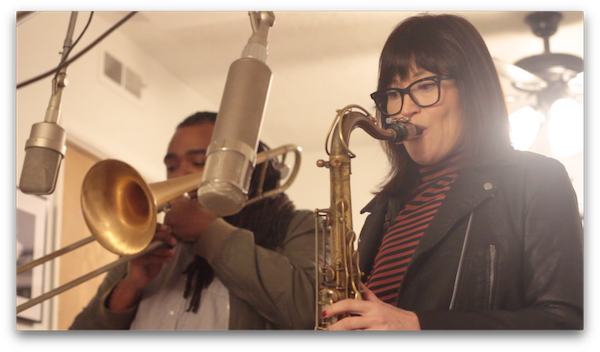
- Log in or register to post comments


It's that small spaces can be great recording spaces. (Just look at all the artists who posted videos from their home studios, and in general things like NPR's Tiny Desk series.)
It always seemed like multi-miking came out of ever-more-available channels for tracking, and large groups or bands. But even an orchestra can sometimes be captured well with just 2 mics.

... a copy of "The Recording Engineer's Handbook"
It's a good read for any enthusiast --- many of our recognizable engineer "stars" are quoted --- but yeah I don't recall them mentioning the cash aspect! You're right, it's far cheaper (and practical) than asking the band to play the song for the umpteenth time.

A recording studio in his living room ? As if he still needed to prove his dedication to music ! Joking aside, I think it's really a fantastic project, and as I had the chance to listen to a song :) I can say that the sound is killer...

the development of sound quality between the earliest AP 45s to the MM 33s, which is correct.
But there were MM 45s inbetween, which already sounded better than the early AP and partly had their 45 RPM justification against the later 33 RPM. It would be worth to differentiate.

Kevin's a great guy with a fine recording sense. He used his best tube mics and recorded chamber, choral and mixed orchestra/choral/vocalist recordings here in Los Angeles area with minimal set-up time. I cherish the few recordings he did 15-20 years ago.

…tells me he’s on to a winner here. Having full range speakers (AN-E Spe He) in the corners plays the the RVG ethos, a ‘band in a room’ if you will and Kevin has for me immediately captured that same presentation which suits this music. I do wonder if he’ll also record in mono? Ultimately though it’s down to the musicians to provide the goods so I’ll be keeping an eye on this. Good luck Kevin.

…at a more realistic volume (rather than 2am) I’m even more impressed. I have to take back what I used to say, “they can’t record like that anymore”, well Kevin can. Sounds like he managed to ‘salvage’ Rudy’s old piano too! It too sounds ‘dead’ suggesting it’s more to do with small rooms for such an instrument much like having massive speakers perhaps. Either way I can’t wait to buy the forthcoming album and look forward to hearing other bands. Let’s hope they favour young energetic musicians (Xhosa Cole, Jay Phelps etc) rather than a bunch of old farts (fill in the blanks here) in their twilight years.

The sentence should read:
"One day shortly after moving in, I took a walk down Prospect towards Essex Street, more precisely to the Liquor store."

Love what I'm hearing! Can't wait to buy this!

Nice to have a high-rez download too. My DAC reads 176.4 for this sample file.
The only slight criticism I'd have is that the piano is a bit low in the mix, and Ms. Edkin's sax, and the trombone in the last section, are rather dry and close up, compared to the nice, short room sound from the drums, bass, and piano.
Oh..and they swing nicely too. Well done.

Ich bin sehr zufrieden mit den Prüfungsleistungen, die dieser Schreibservice https://ghostwriter-deutschland.de/klausur-schreiben-lassen/ anbietet. Sie haben mir geholfen, mich auf meine Prüfungen vorzubereiten und akademischen Erfolg zu erzielen. Ihr Autorenteam ist hochqualifiziert und kompetent in der Erstellung von Prüfungsarbeiten, die umfassend, gut strukturiert und auf meine speziellen Bedürfnisse zugeschnitten sind. Sie sind mit der Materie bestens vertraut und stellen sicher, dass der Inhalt korrekt und relevant ist. Ihre Professionalität, Zuverlässigkeit und ihr Engagement für hervorragende Leistungen machen sie zu meiner ersten Wahl, wenn es um das Schreiben von Prüfungsarbeiten geht.
